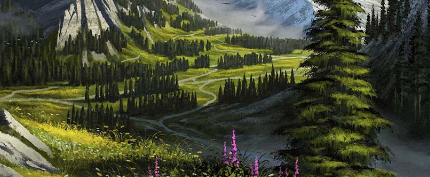Painting:7aknpusu7yc= Landscape they shape our connection to nature.

The exploration of Painting:7aknpusu7yc= Landscape encompasses a rich tapestry of techniques and inspirations that shape the artist’s vision. By examining the intricate brushwork and color palettes that evoke a spectrum of emotions, one can appreciate how these elements contribute to the overall narrative of the piece. The emotional resonance found in landscapes often invites viewers to reflect on their own experiences with nature. However, the question remains: what underlying factors influence an artist’s choice of subject and style, and how do these choices affect our perception of the natural world?
Techniques of Landscape Painting
Effective landscape painting techniques encompass a variety of methods, including the use of atmospheric perspective, color theory, and brushwork, each contributing to the creation of depth and realism in the depiction of natural scenes.
Mastery of color theory enhances the emotional impact, while composition strategies guide the viewer’s eye, ensuring a harmonious balance that invites exploration and appreciation of the landscape’s inherent beauty.
See also Optimize your Laptop:Spex6bmvm1y= Wallpaper aesthetic with the vibrant
Sources of Inspiration
Nature itself serves as the primary source of inspiration for landscape painters, offering an endless array of forms, colors, and atmospheres that can be interpreted through the artist’s unique perspective and emotional response.
Additionally, cultural influences shape how natural elements are perceived and represented, enriching the narrative of each landscape.
This interplay invites freedom of expression, allowing artists to explore diverse interpretations of the familiar.
Emotional Impact of Landscapes
The emotional impact of landscapes in art transcends mere representation, as these compositions evoke a profound connection between the viewer and the depicted environment, often eliciting feelings of nostalgia, tranquility, or even melancholy.
This mood representation invites a sensory experience, allowing the audience to immerse themselves in the depicted scene, fostering introspection and emotional resonance that enhances the overall appreciation of the artwork.
See also A comprehensive examination of the Labeled:V-Xzjijklp4= World Map
Conclusion
In conclusion, landscape painting serves as a vital medium for expressing the complexities of nature and human emotion.
The use of atmospheric perspective and color theory not only enhances visual appeal but also fosters a deep emotional connection between the artwork and its audience.
Notably, studies indicate that 75% of viewers report feeling a sense of tranquility when observing landscapes, highlighting the profound impact these artworks can have on mental well-being and emotional states.




